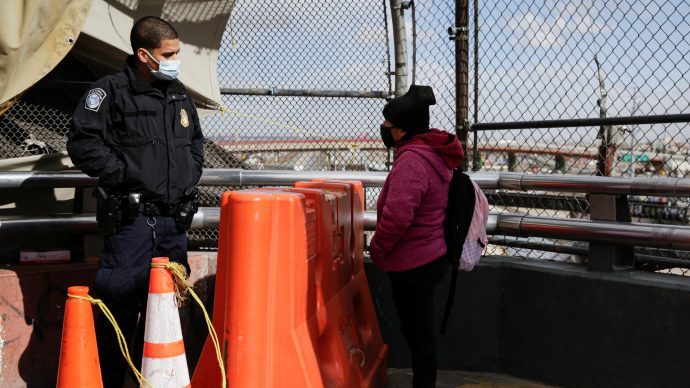Two Catholic organizations in southern Texas are prepared to provide humanitarian relief to a combined 400 migrants a day, with the expectation that U.S. Customs and Border Protection will release more migrants as soon as next week.
“Having participated in a few meetings with other non-profit organizations as well as the government agencies, they are letting us know and they are also getting us ready that families are going to be released,” Rebecca Solloa, the executive director at Catholic Charities of the Diocese of Laredo told Crux.
Solloa didn’t have an exact date when the government will release more families, but said they plan to be ready to help 100 migrants a day by Monday with a primarily outdoor setup and COVID-19 precautions.
Sister Norma Pimentel, executive director of Catholic Charities of the Rio Grande Valley said they’re ready to provide similar services to 300 migrants a day. As the biggest shelter across the whole border from south Texas to California, Pimentel said in non-COVID times capacity is 1,200 people.
“Very soon we will know that process and so I wouldn’t be surprised if at the beginning of next week, it should happen,” Pimentel said. “And what I understand is it’s going to be a very controlled way to manage what’s going to happen.”
The White House hasn’t announced a plan to allow asylum seekers to cross. Earlier this week, White House press secretary Jen Psaki discouraged migrants from trying to enter the country.
“Due to the pandemic and the fact that we have not had the time as an administration to put in a humane, comprehensive process for processing individuals who are coming to the border. Now is not the time to come,” she said.
In a conversation with Crux, Pimentel noted that Border Patrol has sent them between 50 and 100 people a day – mostly families – for the past two weeks, as reports indicate holding facilities at the south Texas border have started to reach the COVID-19 safe capacity.
A number of factors have led to the buildup of people at the southern part of the border. Pimentel attributes the rise to a law now enforced in Tamaulipas – the northeastern most state in Mexico that extends along the southwest portion of the U.S.-Mexico border – that does not allow children under the age of seven to be returned to the country.
Some attribute part of the influx to the natural disasters in Central America and turmoil in Haiti. Plus, there’s the migrants at the border that had been previously detained under the previous administration’s “Remain in Mexico” policy, which kept asylum seekers on the Mexico side of the border while a judge considered their case. The Biden Administration announced that it won’t add people to the program, but hasn’t announced how it will resolve pending cases.
Solloa also notes that the route to southern part of the Texas-Mexico border is the most utilized, which is why the same influx hasn’t seen elsewhere along the border.
“The route is safer. It’s not as dangerous. It’s probably the route of less cartel manipulation, or less violence towards the migrants, whether it be kidnapping or rape or stealing what they have,” Solloa said. “Also, probably crossing the (Rio Grande) river. Going further south to the Brownsville, McAllen area the river is not as deep to be able to crossover.”
At both Catholic Charities of the Rio Grande Valley and the Diocese of Laredo, migrants are usually there for a few hours before they continue their journey. They’re given food, a shower, a change of clothes (if needed), connection to family, guidance on their next steps and other humanitarian services, according to Solloa and Pimentel.
“People are desperate. They’ve been waiting for a long time and now if they can go they’re going to go,” Solloa told Crux. “They know it’s very near and so if they start coming in droves and by that leaving their camps and coming in then it’s going to be overwhelming.”
Pimentel, meanwhile, has complete confidence that the “process is going to be followed with great caution and order and safety for everybody. I don’t see them releasing so many people at one time that the processing facilities are going to be overcrowded.”
Bishop Mark Seitz of El Paso said they’re not seeing any dramatic increases of migrant crossings in his city, but they expect it could happen soon as the Biden Administration tries to find ways to open the doors again in a safe, orderly way.
“We’re trying to prepare ourselves to be ready to do whatever it takes to assure the different authorities that we’ll be ready to receive them safely when they’re permitted to cross,” he told Crux.

